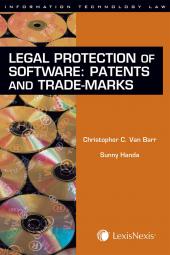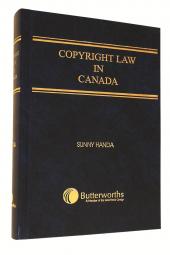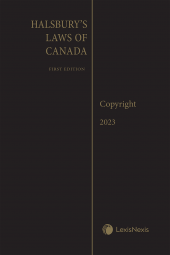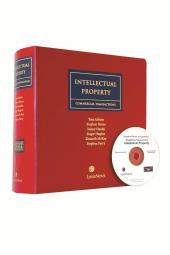Legal Protection of Software - Patents and Trade-marks
One Year Subscription Only Terms
Subscribers receive the product(s) listed on the Order Form and any Updates made available during the annual subscription period. Shipping and handling fees are not included in the annual price.
Subscribers are advised of the number of Updates that were made to the particular publication the prior year. The number of Updates may vary due to developments in the law and other publishing issues, but subscribers may use this as a rough estimate of future shipments. Subscribers may call Customer Support at 800-833-9844 for additional information.
Subscribers may cancel this subscription by: calling Customer Support at 800-833-9844; emailing customer.support@lexisnexis.com; or returning the invoice marked 'CANCEL'.
If subscribers cancel within 30 days after the product is ordered or received and return the product at their expense, then they will receive a full credit of the price for the annual subscription.
If subscribers cancel between 31 and 60 days after the invoice date and return the product at their expense, then they will receive a 5/6th credit of the price for the annual subscription. No credit will be given for cancellations more than 60 days after the invoice date. To receive any credit, subscriber must return all product(s) shipped during the year at their expense within the applicable cancellation period listed above.
Product description
This compact guidebook is the latest edition in the Information Technology Law series by veteran information technology legal expert Dr. Sunny Handa (this edition co-authored with Christopher C. Van Barr). Patents and trade-marks, as they relate to software, constitute an increasingly important area of law, and it is rare to find a book that delves so deeply and thoroughly into this subject. Written in plain English, with legal concepts and phrases clearly explained, this book is necessary reading for anyone in the business of protecting, creating or writing software, or anyone who represents those who do.
Book Features
- Provides a unique synthesis of two areas of IP law - patents and trade-marks - as they apply to software protection
- Discusses a myriad of issues involved in patenting or trademarking software, both in Canada and internationally (the U.S., U.K., Europe and Japan)
- Provides a thorough analysis of the statutory framework, case law, and application of international conventions and treaties, as they relate to trade-marks and patents for software
Benefits for the Reader
- Affordable, easy to carry and read, with numerous headlines for quick reference
- Written in a clear and concise manner -- the law and legal principles are plainly stated and the authors refrain from wordy and esoteric discussions of the law that can be confusing to non-legal readers
- Many of the concepts and principles discussed in the book can be applied to real-life problems business owners face as they try to protect their software IP
Who Should Buy This Book?
- Lawyers - Legal practitioners will find that this book serves as a useful guide, whenever their clients face IP issues pertaining to their software
- In-house Counsel - This guidebook is a must-have for any corporate counsel looking to protect the IP interests of their company's software products
- Software Business Owners - This book is easy to read, and is easily understood by non-legal business people
- Patents and Trademark Agents - This book delivers an in-depth study of pertinent trade-mark and patent issues concerning software. A necessary reference source for any patent and trade-mark agent dealing with software
Table of contents
Table Of Contents
Preface
Table Of Contents
Section I: Patents
Chapter 1 – Background
Chapter 2 – Patent Law In Canada
Chapter 3 – Software
Chapter 4 – Software Patents
Chapter 5 – Software Patents In Canada
Chapter 6 – Software Patents In The United States
Chapter 7 – Software Patents In Europe
Chapter 8 – Software Patents In The United Kingdom
Chapter 9 – Software Patents In Japan
Chapter 10 – Unique Issues Related To Software Patent
Chapter 11 – Business Method Patents
Section II: Trade-Marks
Chapter 12 – The Basics Of Trade-Marks
Chapter 13 – Applying Trade-Mark Law To Software
 Lexis Nexis
Lexis Nexis 


